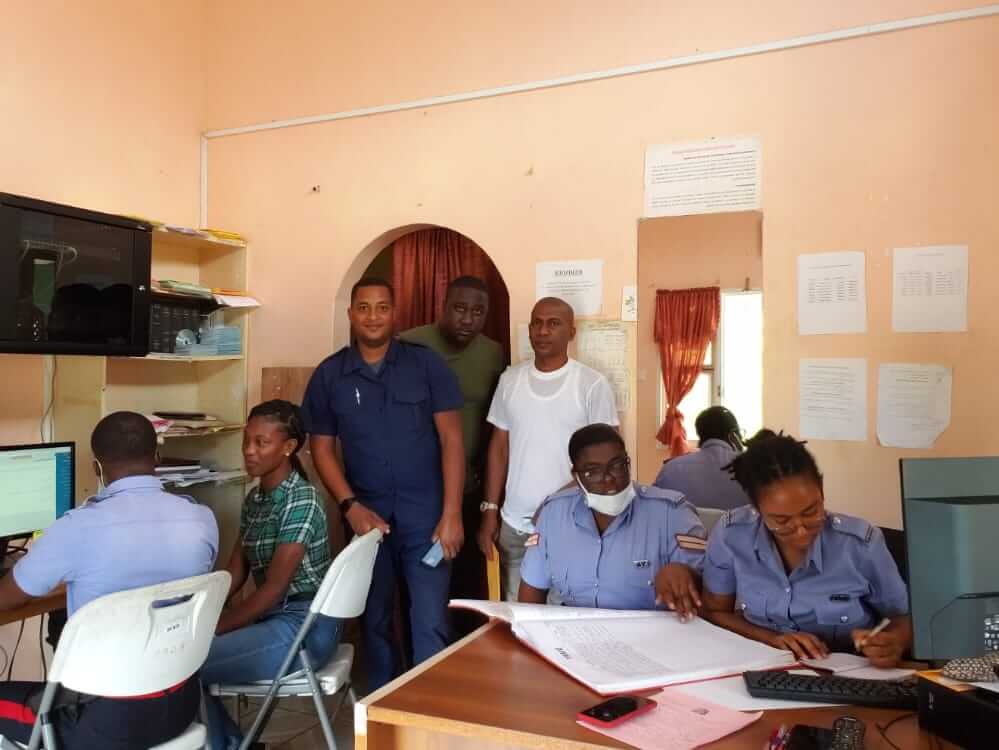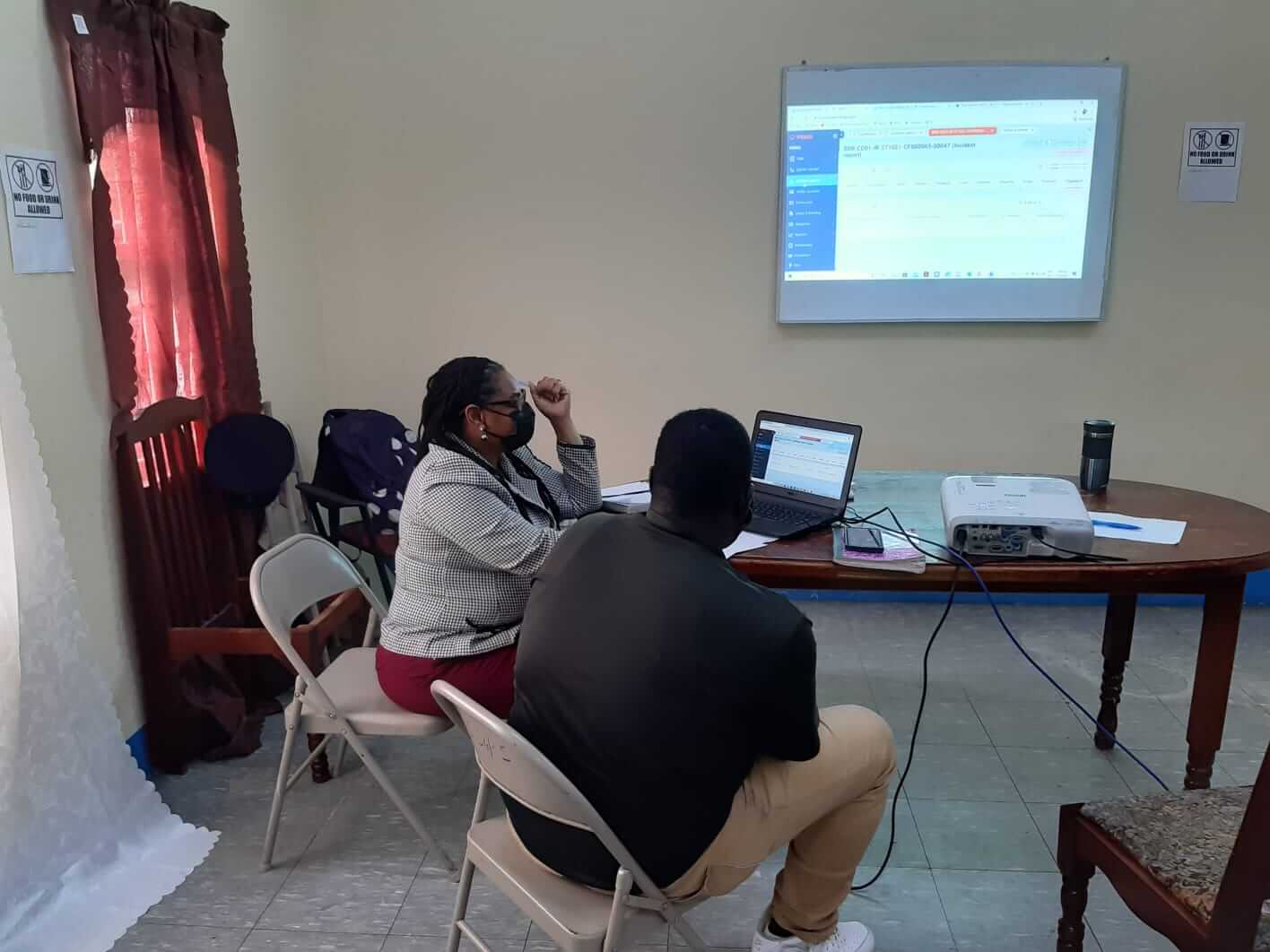The Caribbean region’s progress in law enforcement and crime prevention has been impeded by outdated police information management methods. To help police stations transition from paper-based reporting to a digital format, which aims to assist the Police Force in improving citizen security data management, analysis, and monitoring for crime, the PRMIS application was developed.
The project’s goal is to eliminate delays in the development of law enforcement and crime prevention in the Caribbean region due to an outdated system of police information management that relied heavily on paper documents and lacked standardization of the data management practices on a national and cross-national scale.
This article will discuss the major milestones of implementing PRMIS in Grenada in 2022.
- Highlights of Implementing PRMIS in Grenada;
- Development of the Commander’s Guide;
- PRMIS Classification by Station and Department Usage
- Key Benefits Achieved Through Implementation of PRMIS
- Five Areas in Which PRMIS Excels the Most

Highlights of Implementing PRMIS in Grenada
The Royal Grenada Police Force, in collaboration with USAID and UNDP, began its digitalization efforts in 2018 by presenting the Police Incident Form (PIF). It provided enough data on the pros and cons of introducing such an application, which laid the foundation for implementing a more advanced solution – the Police Records Management Information System (PRMIS) developed by Softengi.
In February 2022, Softengi completed the prototype of the PRMIS application and sought three trainers from each recipient country to undergo the trainer’s course. Grenada ambitiously provided additional eleven officers to participate in the session (internally funded), bringing the total number of officers trained to fourteen.
During the training, the trainers were deployed at three pilot stations, namely, St. David’s Police Station, South St. George Police Station, and Sauteurs Police Station. This phase allowed for much-needed testing of the capabilities of the system to integrate fully without our organizational structure. The UNDP-initiated Pilot was completed on March 2022.
This Pilot phase was met with some level of challenges in ensuring that the processes were cohesive with the Force’s current Standing Orders and Procedures.
As a result, WPC #55 Coutain developed an additional Training Manual and SOP guide to provide their own trainees and trainers with clear-cut instructions on how to utilize the application in the absence of physical teaching assistance.

Development of the Commander’s Guide
As of August 2022, the Commander’s Guide was created with the same intent as above. The training team has successfully trained 12 (out of 14) stations and has touched on some of the major departments with direct ties to the stations trained. Further training was supposed to take place at the Head Quarters of these Departments, with approximately 355 Police Officers of varying ranks trained on the use of the application (11 stations and 3 departments). In addition, special sessions were held with station commanders, divisional commanders, and the COP, along with their administrative team.
PRMIS supports creating universal processes that must be adopted and followed by all officers within the organization, ensuring that everyone follows the same procedures while managing Calls for Service, Incidents, and Case Files.
“The current In-Force Standing Orders and Police Act are legal documents used to determine how officers perform their daily functions. These documents guide officers in detail on the processes and procedures that should be followed to complete various tasks and aspects of policing. With the introduction of the PRMIS application, it was clear that the system now affords us the ability to perform functions in one centralized location that would ordinarily be performed by more than one entity.” – Grenada Police Authority Representative
To guide the officers on the distribution of responsibilities to mirror current procedures, special SOPs were created. For example:
- Standing Order
Indicates that when a report is made, it is the responsibility of the receiving officer to attach a rate of response. Immediate (same-time response), Routine (response within 2 hours), and Delayed (response within 24 hours). The PRMIS application labels the rate of response as High, Medium, and Low. Therefore, the SOPs were documented to provide officers with an explanation of how the two interrelate.
- Wanted Poster

The PRMIS application has the ability to post both internal and external wanted posters. While there is a procedure for posting externally wanted posters, there were no guidelines to determine how internal postings should be handled.
As such, an SOP guideline was created, delegating the responsibility to specific persons and departments depending on the purpose of the poster. Therefore, SOPs were not changed to accommodate the PRMIS application, but rather, they were created to mirror the current laws and procedures governing police actions in a format that best addresses the capabilities of the system.
PRMIS Classification by Station and Department Usage
Presently, the use of the application can be classified into four categories:
1. Full use of the application only;
2. Duo use of the application and the physical books;
3. Intermittent use of the application with the main use of the physical books;
4. Training pending.
To date, one station and one department fall under the first category. Four stations and one department fall under the second category. Six stations fall under the third category. And two stations, as well as the other remaining departments, fall under the fourth category.
Key Benefits Achieved Through Implementation of PRMIS
1. The potential elimination of 14 physical books (legally required to be completed daily);
2. The platform provides speed and efficiency in building a modus operandi (MO) for a series of house breakings. PRMIS allows various police stations and officers to combine and share data on locations, items being stolen, and suspects in a more efficient manner than if the information was inputted manually;
3. It assists officers in gathering the information needed to make arrests faster. Within a week of collecting and sharing data within the piloted platform, one station was able to apprehend a perpetrator who had previously evaded them for 30 days;
4. Several stations have been utilizing the statistics generated by the system to map out troubling areas within their community and develop community policing initiatives to deter crime in that area;
5. The application helps diminish waiting times on the part of the complainant in getting feedback on reports made in the past. As opposed to rummaging through old books that are sometimes too faded or discolored to read;
6. Real-time monitoring has been a success. Trainees that were newly integrated into the RGPF could have been monitored closely for areas of misunderstanding on not only how to use the application but how to treat various aspects of different reports. Clarity and guidance can be achieved at a faster pace to ensure that matters are dealt with efficiently;

7. The UNDP article titled “Women Lead Digital Policing through CariSECURE” emphasized the role women play in the fight against crime and its direct correlation with the use of the application on the example of one of Grenada’s trainers – Antonia;
8. The use of PRMIS allowed the development of a media presence regarding the digitalization of the RGPF (which aligns itself with the strategic focus of the country at present) and speaking to the community on what is to be expected of them when making reports;
Five Areas in Which PRMIS Excels the Most
The application served the function it was designed for perfectly well. However, it is crucial to mention some of the areas where it demonstrated the best results:
- Reporting
With this program, the time needed to assemble these documents has been drastically decreased, which in turn will lead to an increase in the number of officers that can be deployed in the field.
- Registries
Having the ability to share certain parts of the information gathered by the station/department with that of other stations/departments is a welcomed change. To have the ability to find stolen or missing items easily located and noted is vastly beneficial.
- Crime Case
The ability to generate a Crime Docket/File from the system is a game changer. This mundane task would sometimes take days to complete due to human error, but it can now be rectified with ease.
- Arrest and Booking
This feature allows tracking all activities related to persons while in custody. This is an important aspect on numerous occasions. The information pertaining to their care is requested by the courts.

- Reference Numbers
Having the ability to track all the activities pertaining to a specific case is beneficial enough, but assigning a number to it that can be provided to the complainants for easy follow-up is even better.
Conclusion
PRMIS allows officers to log, store, and exchange information related to various aspects of policing more effectively. Police officers already using the system have only positive feedback regarding the application’s intuitive interface and simplicity of working with information.
The solution was developed for eight Caribbean countries, including St. Kitts and Nevis, St. Vincent and the Grenadines, Guyana, Suriname, St. Lucia, Antigua and Barbuda, Barbados, and Grenada. After hearing about the successful implementation of PRMIS in the Caribbean, especially in Grenada, other countries expressed their interest in the realization of a similar project for their police forces.






